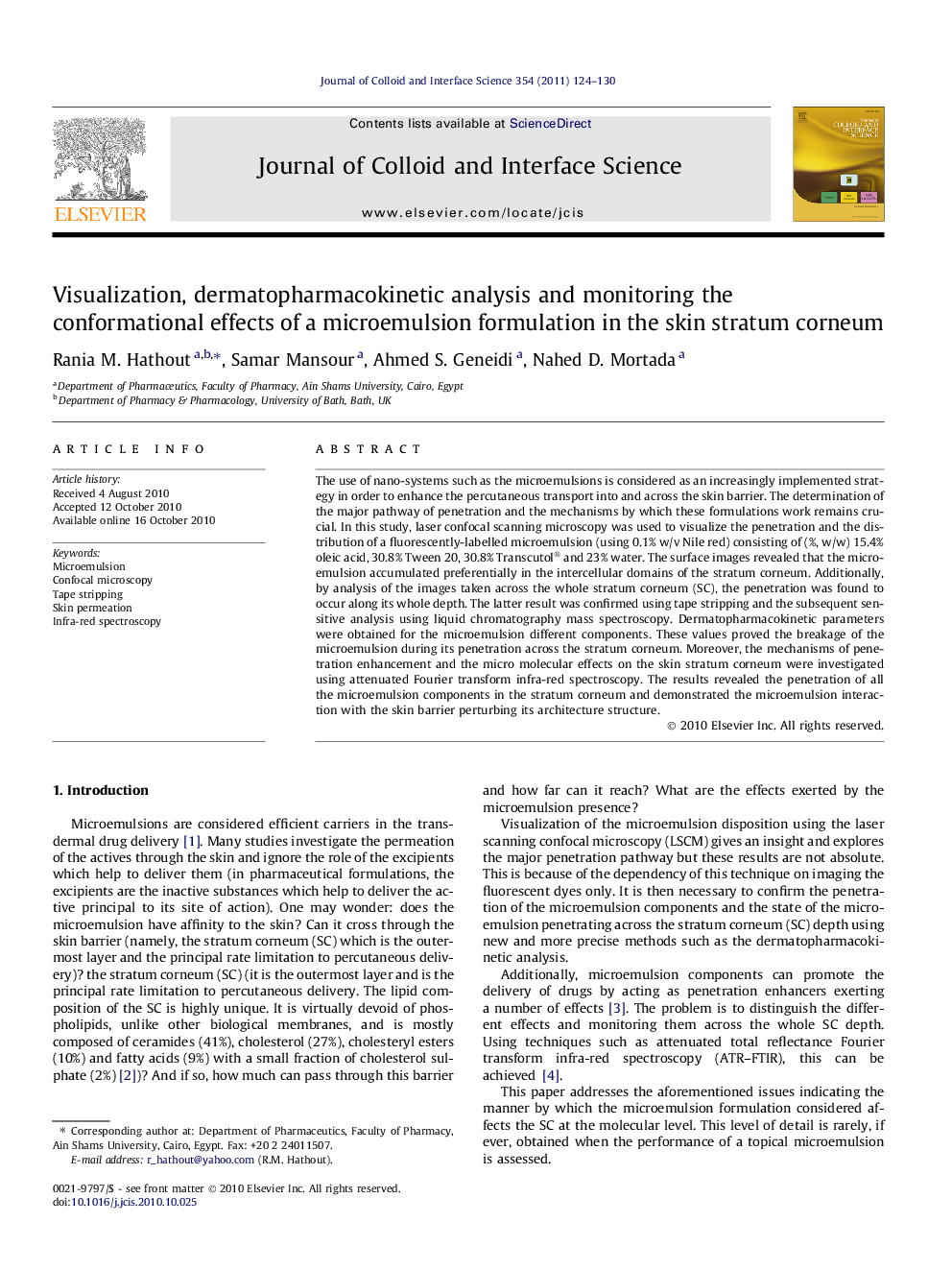| Article ID | Journal | Published Year | Pages | File Type |
|---|---|---|---|---|
| 608856 | Journal of Colloid and Interface Science | 2011 | 7 Pages |
The use of nano-systems such as the microemulsions is considered as an increasingly implemented strategy in order to enhance the percutaneous transport into and across the skin barrier. The determination of the major pathway of penetration and the mechanisms by which these formulations work remains crucial. In this study, laser confocal scanning microscopy was used to visualize the penetration and the distribution of a fluorescently-labelled microemulsion (using 0.1% w/v Nile red) consisting of (%, w/w) 15.4% oleic acid, 30.8% Tween 20, 30.8% Transcutol® and 23% water. The surface images revealed that the microemulsion accumulated preferentially in the intercellular domains of the stratum corneum. Additionally, by analysis of the images taken across the whole stratum corneum (SC), the penetration was found to occur along its whole depth. The latter result was confirmed using tape stripping and the subsequent sensitive analysis using liquid chromatography mass spectroscopy. Dermatopharmacokinetic parameters were obtained for the microemulsion different components. These values proved the breakage of the microemulsion during its penetration across the stratum corneum. Moreover, the mechanisms of penetration enhancement and the micro molecular effects on the skin stratum corneum were investigated using attenuated Fourier transform infra-red spectroscopy. The results revealed the penetration of all the microemulsion components in the stratum corneum and demonstrated the microemulsion interaction with the skin barrier perturbing its architecture structure.
Graphical abstractVisualization of the microemulsion disposition using the laser scanning confocal microscopy explores its major penetration pathway.Figure optionsDownload full-size imageDownload high-quality image (83 K)Download as PowerPoint slideResearch highlights► Laser scanning confocal microscopy was used to visualize the penetration and the distribution of a fluorescently labeled microemulsion. ► Dermatopharmacokinetic analysis determines the rates and extents of penetration of the microemulsion different components and suggests the breakage of the microemulsion during its passage through the stratum corneum. ► The stratum corneum lipids packing and architecture were perturbed by all the components of the microemulsion. ► Tween 20 modified the oleic acid molecular effects on the stratum corneum lipids. ► The microemulsion components have different synergistic mechanisms of penetration enhancement.
